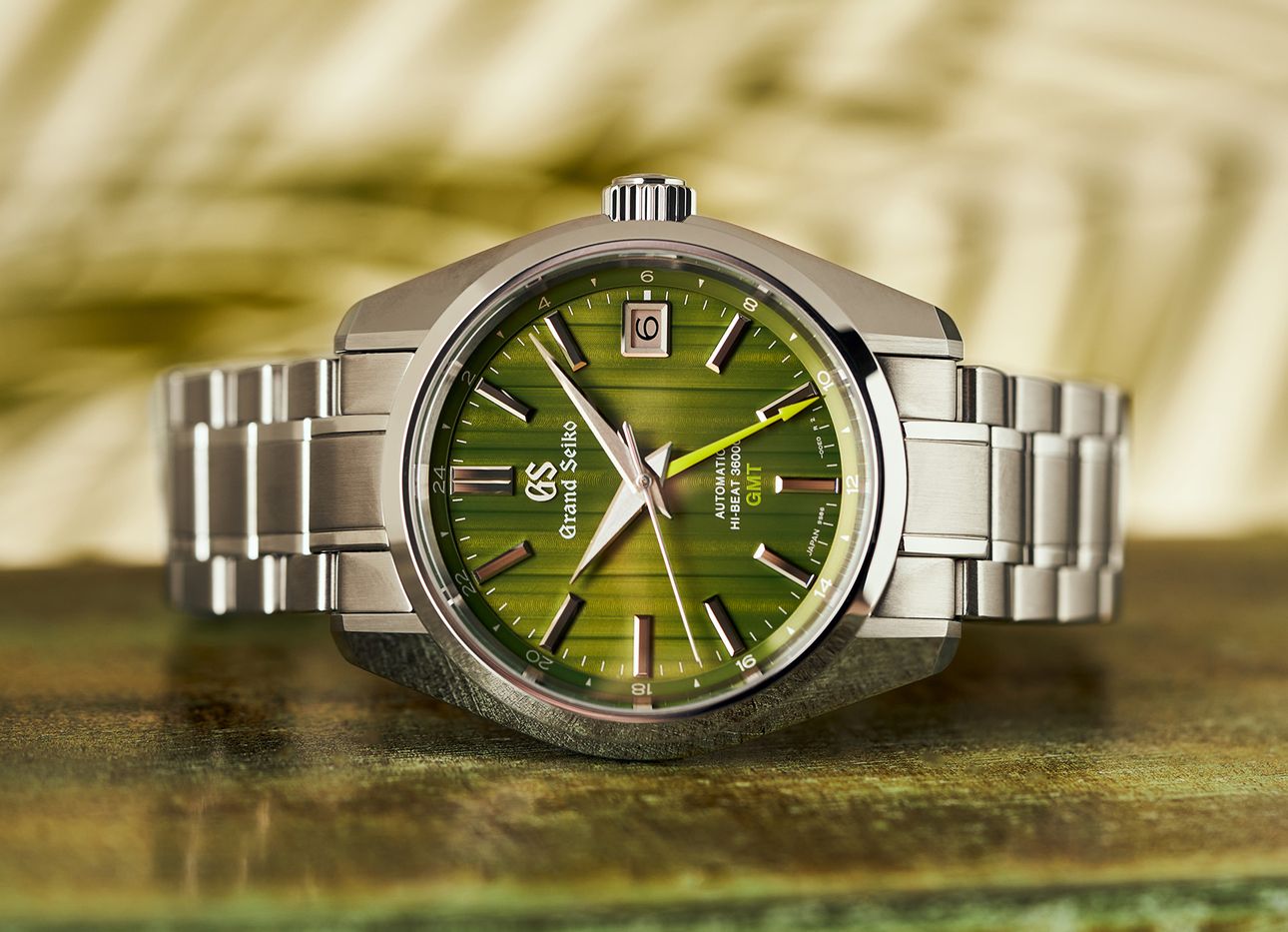
The Bamboo Garden of a Tokyo Museum Becomes a Watch Dial
Taking on the finest Swiss watchmakers, Japan’s Grand Seiko has risen to the top of the industry with its mix of beautiful design, impeccable craft, intelligent (and refreshingly subtle) marketing, and groundbreaking technology. Over the past few decades, the company has built watches time and again with innovative mechanical prowess, implementing meticulous self-winding automatics and its legendary combination Spring Drive movements, a hyper-accurate in-house technology introduced in 1999.
For the new SBGJ259, from the Grand Seiko Heritage Collection—featuring a manually wound Hi-Beat Caliber 9S86 GMT movement as its beating heart—Grand Seiko turned to the Kengo Kuma–designed Nezu Museum, located in Tokyo’s Omotesando district, for inspiration. A Zen-like garden within a bustling neighborhood and city, the bamboo-surrounded space serves as a calming oasis; the watch’s bold, bright green striated dial reflects a similarly soothing aura. Arriving in September and available at Grand Seiko boutiques and authorized retailers in the United States, the SBGJ259 is made exclusively as a U.S. special edition.
Assembled in Grand Seiko’s Shizukuishi studio, near the northern city of Morioka in Japan’s Iwate Prefecture, a region known for its awe-inspiring landscapes, the watch befits the home of its manufacture, too. And it blends in, naturally, with many other of Grand Seiko’s timepieces: The colors and textures of Japan animate a slew of the watchmaker’s dials, including that of the Omiwitari, part of the Elegance Collection, which mimics the undulations of the frozen Lake Suwa, and the White Birch, from the Heritage Collection, which takes cues from the birch trees of Shizukuishi. Elements such as changing seasons, mountainous terrain, or cherry blossoms have become highly discernable Grand Seiko trademarks. Now, this quiet bamboo garden nestled in the heart of Tokyo has joined the family.